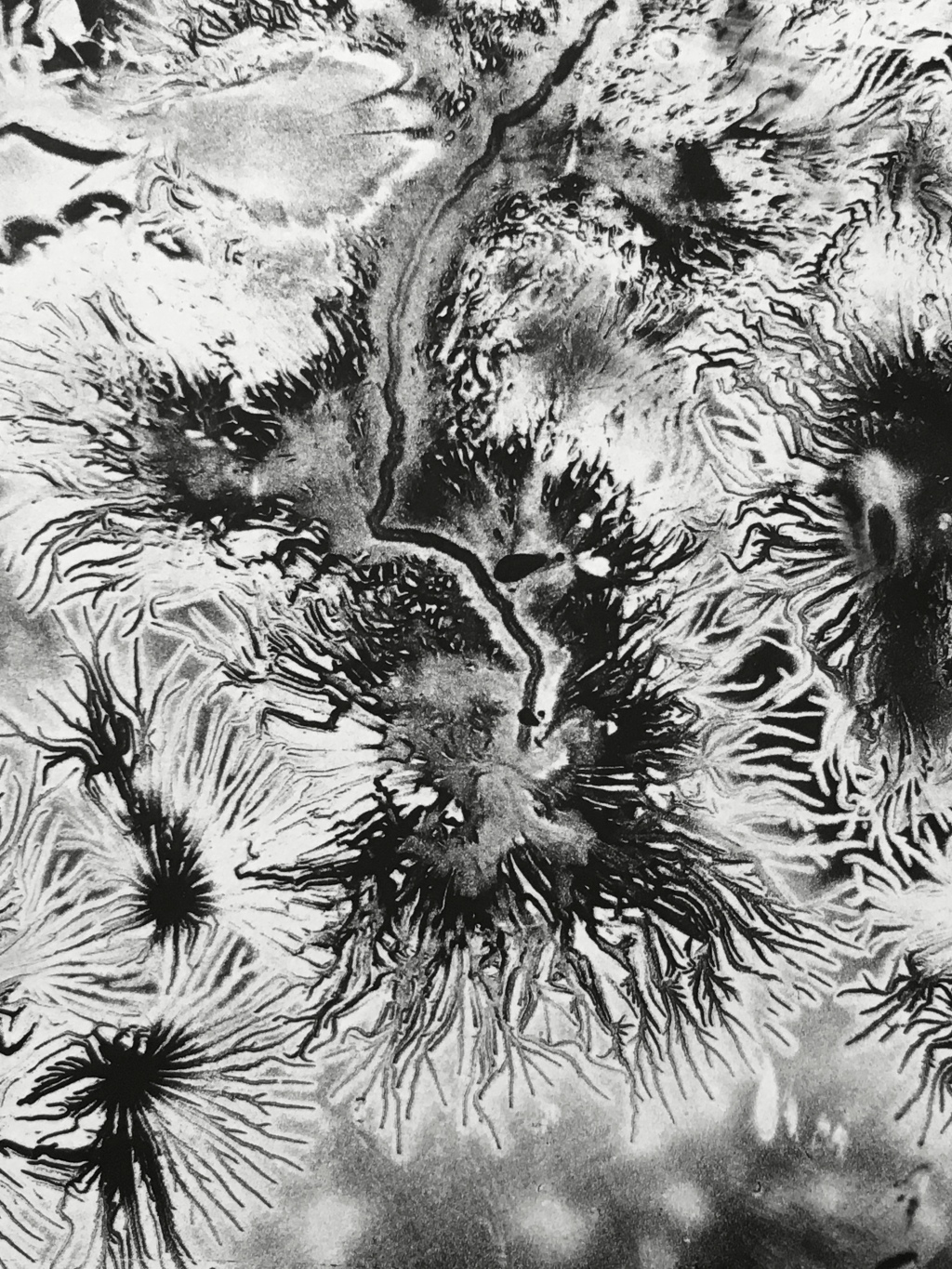
This work is not abstract…it is entirely representational, and true to life.
Much like infrared photography, radio telescopes, and x-ray imaging, the process of making these prints works to bring some aspect of the electromagnetic spectrum into the limited range of human perception. Normally, electricity is only experienced as momentary flashes of light, and while its function is ubiquitous, its form can rarely be enjoyed. Electrostatic monotypes allow safe passage to explore this world of hidden beauty.
The marks captured on these prints are created by static electricity, as it interacts with objects and the environment. Look at them as a kind of two-dimensional finger print left behind by a three-dimensional finger. Objects are placed upon a smooth plate and then are subjected to an electric charge created by a Wimshurst Machine, a kind of 19th century electrostatic generator. This hand-crank operated machine is capable of producing 20-30k volts and static sparks up to three inches long. Wires leading off of this machine are attached to objects and are used to manipulate the mark-making process. As electricity flows through and around an object, charged particles (called ions, which display either a positive or negative charge) are deposited, like a residue, onto the surface plate on which the objects sit.
The trick to reveal the final image lies in the facts that: opposite charges attract (think magnets); that laser copiers work on this exact principle; and that the copy toner used in these
machines carries a charge that is attracted/repelled by ions that
are stuck to a smooth surface. Furthermore, toner is so fine a
powder that even the smallest of details can be captured, and it is intended to melt on and become fused to paper.
What you see, then, in these images is the actual pattern of laser toner, as it was directly attracted (or repelled) by a pattern of positive and negative ions, as they were left behind by the flow of an electrical current through and around an object. Each print, therefore, is a direct capture of a particular moment in time as influenced by a very specific set of conditions, that can never be replicated exactly again.
I came up with this process after circling around it for nearly a decade of printmaking work. In subsequent posts I’ll backtrack through the material and methods that lead me to this work!

Leave a comment